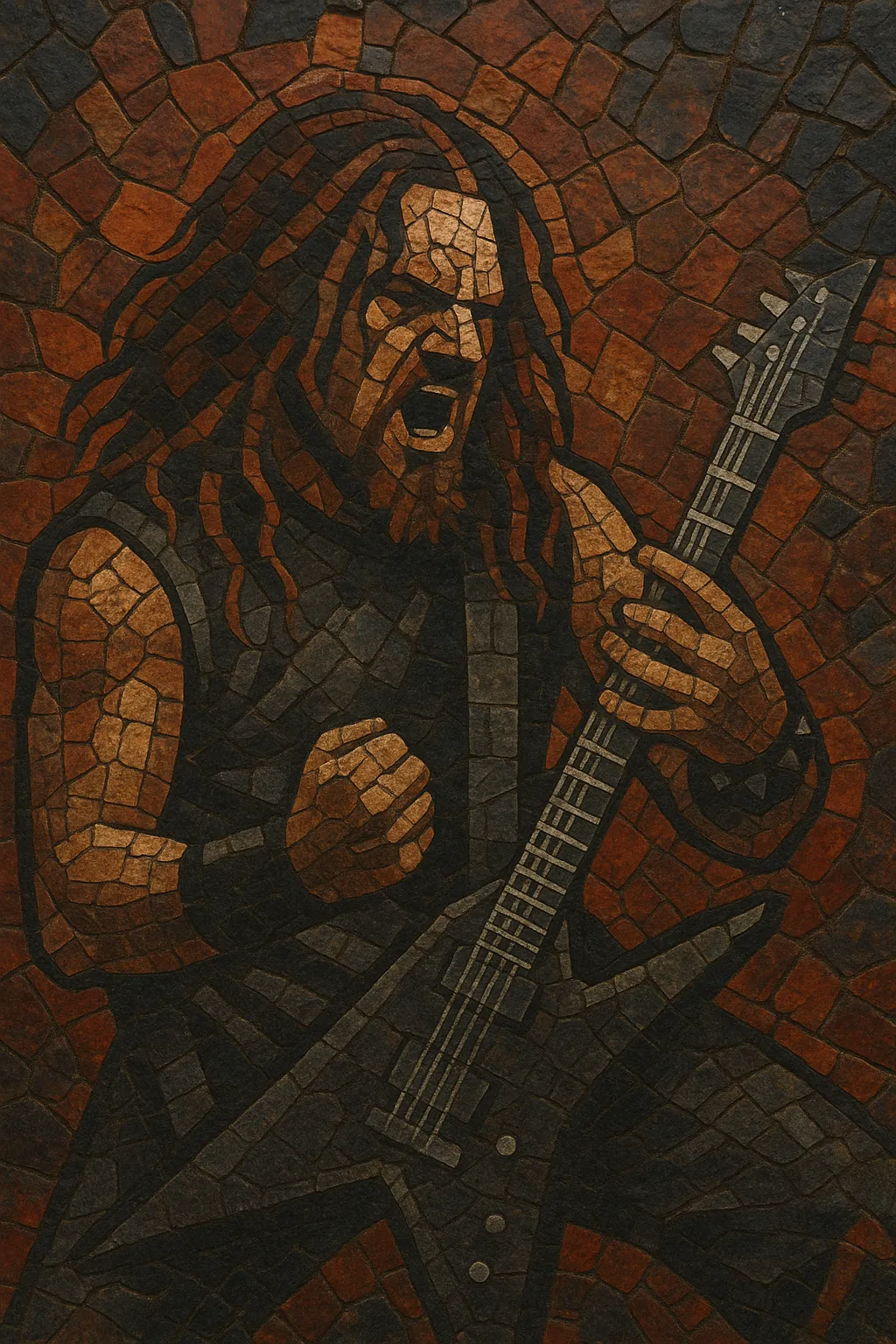Groove metal is a heavy metal subgenre defined by mid‑tempo, syncopated, and riff‑centric songwriting that prioritizes head‑nodding "groove" over sheer speed. Guitars are typically down‑tuned and palm‑muted, locking tightly to a punchy, backbeat‑driven drum feel and muscular bass lines.
Vocals are usually aggressive shouts or barks with occasional melodic or anthemic passages, while lead guitars favor pinched harmonics, blues‑tinged bends, and compact, percussive phrases rather than long neo‑classical runs. Production tends to be tight and weighty, emphasizing a thick, modern rhythm‑guitar tone and precise drum transients.
Stylistically, groove metal grew out of late‑’80s thrash and hardcore but slowed and widened the rhythms, borrowing the feel of funk metal’s syncopation and, in some cases, southern rock’s swagger.
Groove metal emerged as thrash metal bands and adjacent heavy acts began favoring mid‑tempo, syncopated riffing over breakneck speed. Early blueprints appeared in Exhorder’s Slaughter in the Vatican (1990) and The Law (1992), and Pantera’s Cowboys from Hell (1990) followed by the defining Vulgar Display of Power (1992). These records retained thrash aggression but emphasized locked‑in, percussive riffs and a massive rhythm section.
Sepultura shifted from classic thrash toward a heavier, groove‑driven sound on Chaos A.D. (1993) and Roots (1996), helping globalize the style. White Zombie fused groove with industrial textures and horror‑themed aesthetics, while Machine Head’s Burn My Eyes (1994) codified a darker, urban take on the form. The defining traits—down‑tuning, palm‑muting, backbeat emphasis, and chant‑like vocal cadences—became widely adopted across the heavy spectrum.
Lamb of God, Chimaira, and DevilDriver carried groove metal into the 2000s, tightening production, refining double‑kick patterns, and integrating breakdowns that would overlap with metalcore. The style’s rhythmic focus and compact riff shapes proved highly adaptable to modern live sound and festival stages, sustaining its popularity.
Groove metal’s emphasis on rhythm and space strongly influenced nu metal’s downtuned chug and hip‑hop‑compatible cadences, metalcore’s breakdown architectures, southern metal’s swaggering heaviness, and rap metal’s percussive vocal delivery. Its core aesthetic—precision rhythm guitars locked to punchy drums—remains a foundational language for contemporary heavy music.


